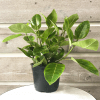A gorgeous climber and member of the Araceae family – Monstera Standleyana. This fantastic plant is unique in its variegation, not perforated, and ovate leaves. Having Monstera Standleyana as part of your botanical collection? If so, learn an easy guide to grow and care for it.
Thank you for reading this post, don't forget to the best blogger Guy About Home who offers the best garden and home improvement tips! If you are a home decor and design fan, don't miss the tips on home ideas. If you are a home garden owner, then you might be interest in our complete guides to house plants!
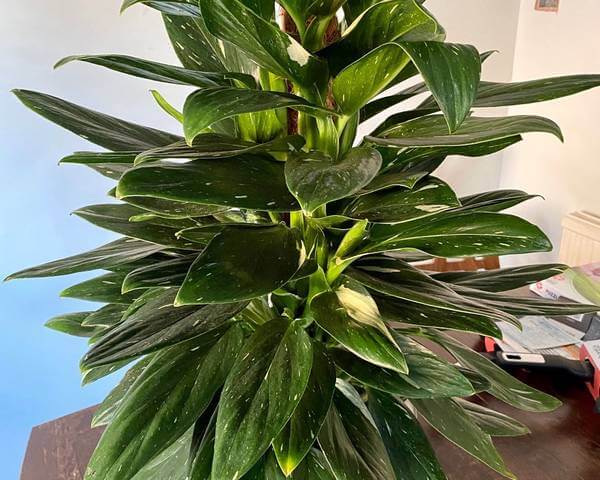
Image Source: Candide
Monstera Standleyana is a stunning household plant with dark green and shiny leaves. Its leaves are slightly asymmetrical, lustrous, and glabrous. Similar to philo lupinum, the variegated form of the species is “Albo and Aurea,” which can be in the form of dots, strokes, and differences in their leaves.
An intention to grow and maintain this plant keeps it shiny, glossy, and healthy. This guide will explore everything there’s to know about Monstera standleyana, including its appearance, growth pattern, care (light, water, humidity, etc.), propagation, toxicity, diseases, etc., and more.
Is Monstera Standleyana Variegated?
Standleyana is an easy-going and exceptional climber, twisting up your indoor trellis or hanging down your pot. Its appearance varies greatly and is based on the variegated form. All Monstera Standleyana are variegated and surfaces with dashes, speckles, or white, cream, or yellow colors across its stem or leaves.
Monstera Standleyana Albo Variegata or White Variegated

Image Source: The Jungle Collective
Monstera standleyana albo variegata (white variegated) is an easy-to-grow plant whose leaves are small, oval, and speckled with white/cream variegation. The plant was confused by many to be a Philodendron cobra plant, but looking closely, you’ll easily spot the difference.
Monstera Standleyana Aurea or Yellow Variegated
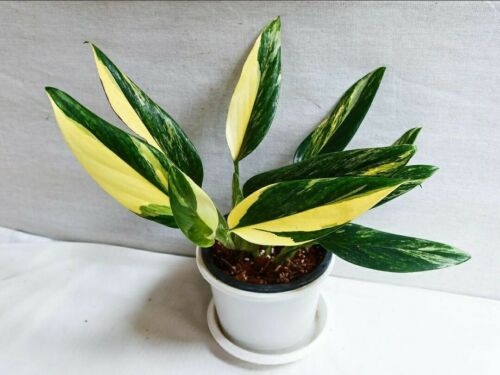
Image Source: eBay.com
Monstera standleyana aurea (yellow variegated) is a small oval-shaped leaf about 6 inches. Its deep green leaves are swathed with yellow variegation, which varies from one leaf to the next.
Monstera Standleyana: Quick Facts & Overview
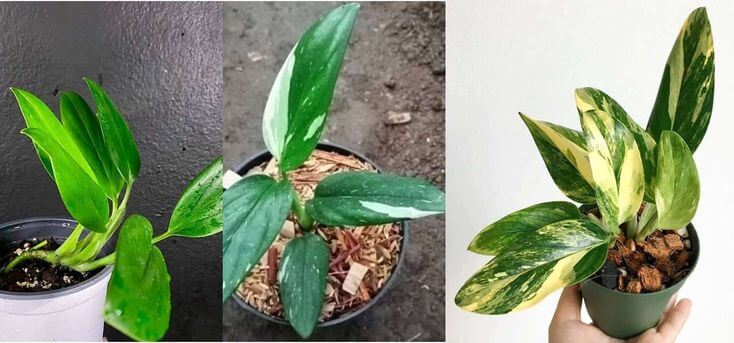
Image Source: Pinterest
- Botanical name: Monstera Standleyana
- Common name: Philodendron standleyana, Monstera standleyana, Philodendron Cobra, Monstera standleyana cobra, or five holes plant.
- Plant type: Evergreen, tropical hemiepiphyte.
Origin: Costa Rica, Colombia, Honduras, Nicaragua, and Panama. - History: Monstera Standleyana is a member of the arum family Araceae. G.S Bunting once described the plant in 1967.
- Temperature: 65°F to 85°F
- Humidity: Prefers high humidity (60% to 80%) but can still tolerate lower 50%+
- Soil: Well-drained and aerated soils that are high in organic matter
- Toxicity: Toxic to humans and pet
- Size: 26 ft (8m) in native habitat and about 4 to 6 feet inside the house
- Light requirement: Bright, indirect light
- Propagation: Stem cutting
- Watering: Medium, letting the top 2 to 3 inches of the soil first dry
The Monstera standleyana is an uncommon aroid with yellow or white variegate and a beautiful climbing plant. Like manjula pothos, the five-hole plant is a flowering plant found in tropical wood in Southern Mexico. its name is derived from the holes in the leaves. Monstera standleyana is a fast-growing plant that needs an ideal environment to grow, especially during the summer and spring seasons.
Monstera Standleyana Growing Habits
As with most tropical plants, Monstera standleyana enjoys a loose, organically rich soil that permits water to drain appreciably. If the soil water is too much, it might cause the plant’s roots to become waterlogged, resulting in the plant’s rotting and eventual death.
What Does Monstera Plant Symbolize
In the eastern culture, it’s said that the Monstera plant symbolizes respect, honor, and longevity. In China, it represents long life, while Feng Shui is connected with an element that induces joy, happiness, fulfilled dreams, and good fortune.
Where are Monsteras Native
Monsteras are native to the tropical regions of Central American countries like South Mexico, Honduras, Belize, El Salvador, Costa Rica, and Panama. It is a genus of 59 species of flowering plant belonging to the arum family, Araceae.
How Many Monstera Species
“Monstera” is the name of a plant genus with close to 50 species. Only a handful of these species are available in the plant nursery and retailers. Monstera deliciosa is one of the most pop species of Monstera.
Monstera Standleyana Albo Mature: My Full Story
One exciting thing about being a plant owner is that you watch your Monstera standleyana grow to maturity. Monstera growth has different stages, and I’ll walk you through how I grow my Monstera seed to maturity.
The Monstera plant has three primary growth stages – seed, leaves, and flowers. Let’s dive in depth.
#1 Seedling growth stage
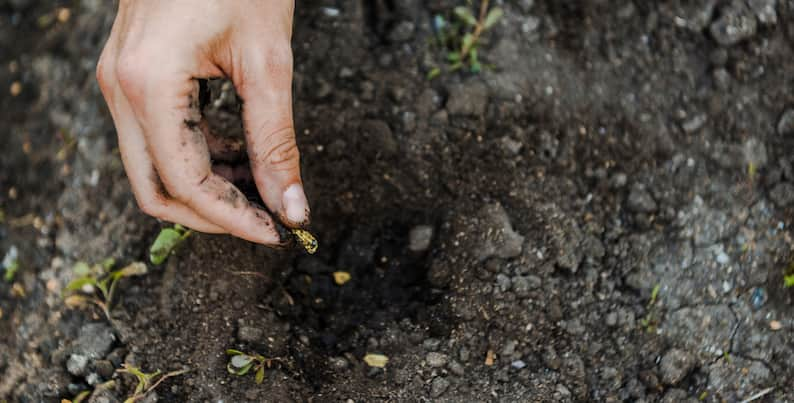
Image Source: houseplantauthority.com
The seed is planted in the soil at this growth stage. The plant relies on the seed for protection and nutrient. After some weeks, the seed leaves begin to emerge and fall off after a couple of weeks for the plant to start growing.
During this phase, the root grows out of the plant nodes. A slender stem also rises from the ground and produces new nodes that allow the plant to spread later.
#2 Juvenile growth stage
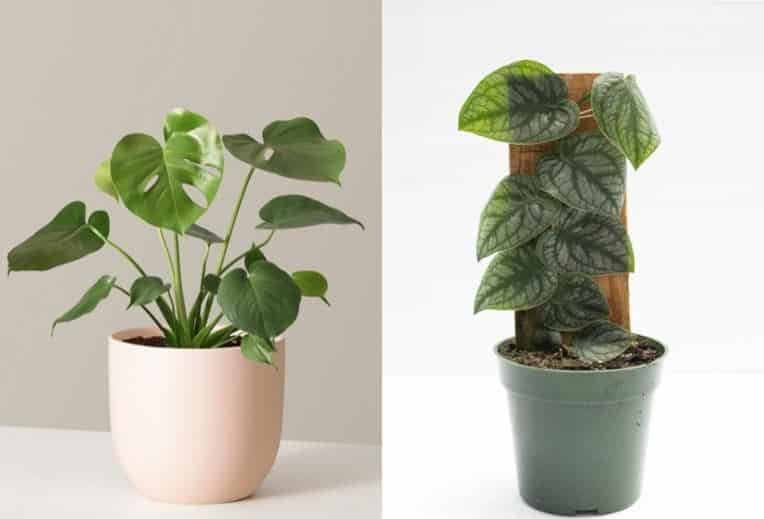
Image Source: homespursuit.com
The plant grows to maturity and may last 2 to 3 years, depending on the species. This second stage begins 3 months after germination. The aerial root grows well, and other sources grow from the plant stem, helping it capture moisture and nutrients in the air. Here, the leaves also grow bright green and darken with time. Lots of new leaves also increase, and fenestration begins.
#3 Maturity fruition growth stage
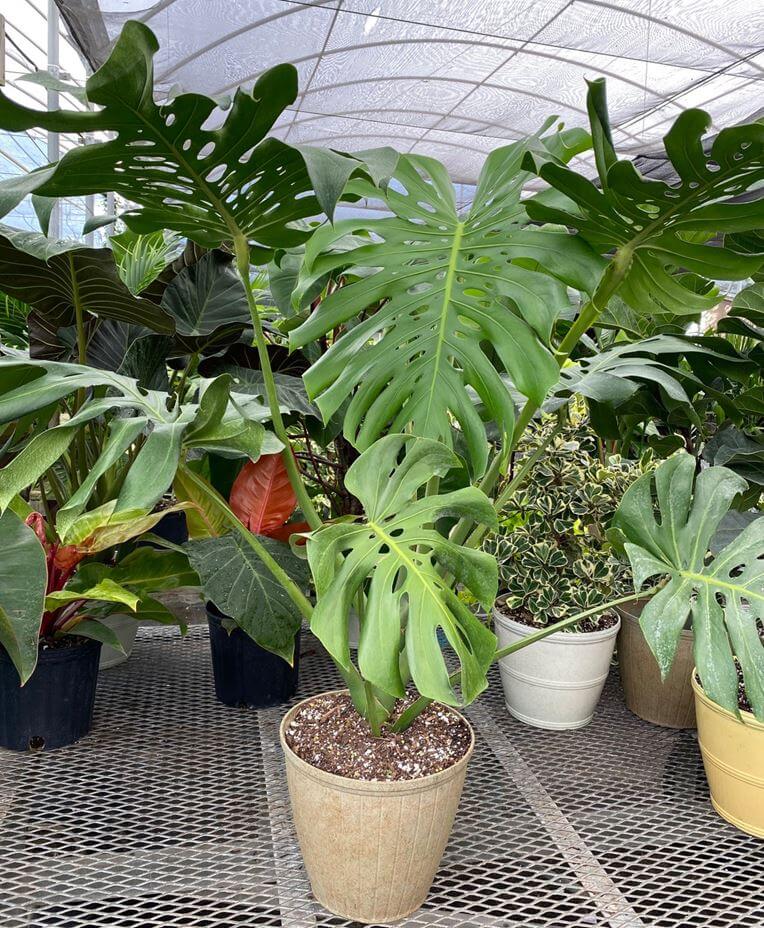
Image Source: homespursuit.com
The Monstera plant produces fruit and flowers in the maturity stage. The fruits create the seeds that are propagated for the new Monstera. The fruits and flowers indicate that your plant is healthy and doing well.
Monstera Standleyana: Things to Know Before Caring
Is Monstera Standleyana Variegata Rare
Monstera Standleyana is a pretty rare and expensive plant. It does not show very often in the market; therefore, it varies in price from one retailer. Depending on the size, a Monstera plant costs between $50 and $180.
Is Monstera Standleyana a Philodendron
The Monstera standleyana was mistaken for a Philodendron because of their similarity in appearance. Although, Philodendron standleyana is related to Monstera standleyana, but doesn’t belong to the same genus.
Is Monstera Standleyana Toxic?
Yes, Monstera standleyana plants are toxic to varying degrees to both humans and animals. Same as monstera siltepecana fenestration, they contain sticky sap on their leaves and stems, poisonous to living things. It’s best to keep it away from pets.
Is Monstera Standleyana Fast Growing?
Monstera standleyana grows to a height of 20′ feet within its natural habitat and 2 to 5 feet indoors. Monstera standleyana plant growth rate isn’t particularly fast. The plant is a reasonably light feeder and needs adequate nutrients to grow its beautiful leaves.
Is Monstera Standleyana Easy Care?
Monstera standleyana is a tropical plant that can quickly grow indoors with suitable soil, water, and lighting. Infact, you need not do much other than watering it to blossom. This makes it less time-consuming to tend.
Does Monstera Standleyana Fenestrate?
Monstera standleyana do not develop fenestrate or holes in their leaves. Still, most of the variegated plant’s leaves are beautiful, gorgeous, glossy, and well-shaped. However, any Philodendron plants with holes in leaves can result from fungal diseases affecting the plants, unfavorable environmental conditions, etc.
Fenestration Monstera Meaning
Holes or splits on Monstera leaves are a sign of fenestration. When Monstera reaches about 3 feet, fenestration starts to show after age 2 or 3 years. Trimming off older leaves and leaving the smaller ones at the base encourages the plants to produce larger leaves, facilitating fenestration.
Monstera Fenestration Stages
Fenestration forms at the matured stage of the Monstera leaves. In the fenestration stages, the leaves begin as a solid shape and then develop slits by the side. And finally, it will build primary, secondary, and tertiary midrib holes. The holes range from smaller ones inside the leaves to bigger ones that eventually split them.
Monstera Standleyana Care Conditions & Requirements
Besides this plant, we also make a full care guide on how to care for Philodendron Painted Lady.
Monstera Standleyana Soil
Soil is one of the essential factors in helping Monstera grow and stay healthy. The plant enjoys rich organic soil with enough bark to allow it to drain well. A potting soil with a mix of orchid bark and perlite will be best for Monstera plants.
Monstera Standleyana Watering
Overwatering your Monstera standleyana plant can lead to fungal diseases or rot roots. Before you wet, stick your finger into the soil, and if the soil is dry two inches down, you can wet. Ideally, once a week is best.
Monstera Standleyana Humidity
Another essential factor your Monstera standleyana plant needs are high humidity. The humidity level should be between 55 and 80% for the plant to grow its glossy green leaves. One way to achieve this high humidity is using a pebble-tray method. To achieve this, fill the tray with pebbles and add water to the same level as the pebbles. Then place the pot containing the plant on the pebbles. As the water drys up, it makes the plant humid.
Monstera Standleyana Fertilizer
Since the Monstera standlelyana plant requires low-maintenance and straightforward care, using organic fertilizer should be minimal. It’s recommended to add fertilizer to the plant 2 to 3 times yearly to boost its fast growth.
Monstera Standleyana Light
Like most indoor plants, Monstera needs a lot of bright indirect sunlight for about 6 hours daily to grow strong and happy. The medium-light level is also best for the plant. You can place it in the eastern or northern direction facing your window.
Not confident in planting an indoor plant? Why not getting power from our inspiring indoor plants quotes?
Monstera Standleyana Propagation: How to Propagate Monstera Standleyana
No worries! Though you might encounter the difficulties when learning how to care such an plant as a new plant caring starter, we got the most popular plant lover quotes that can partner with you and you are going to succeed in plant care and grow.
Besides this plant, we also make a full care guide on how to propagate Philodendron burle marx.
Standleyana Albo Cutting
Stem cutting directly in the water or the soil is the easiest way to propagate Monstera standleyana plants. Most Monstera plants have in common that they’re gratifying propagators.
The stages of rooting a Monstera plant are simple and easy, provided the cutting is healthy and has one or more nodes from which the new growth will begin.
It’s advisable to propagate Monstera plants in summer and spring. In winter, the plant is partially dormant and won’t be able to recoup energy lost when cutting. You can propagate your healthy plant within 4 to 6 weeks of planting. And a propagated node takes 2 to 3 months before forming leaves.
However, before you dive into propagating, here are a few things you must consider before cutting the stems.
- Ensure your plant is healthy. Ensure you always maintain clean, sharp, sterile tools to
- prevent the spread of disease to your new plant.
- Avoid distressing Monstera plants.
- Ensure your growing medium (water or soil) is readily available before cutting.
Step-by-step Propagation of Monstera Plant
Cut two to three healthy nodes and one or two leaves of your Monstera plant.
- Pop it into a pot of fresh water.
- For better results, dip the cut end of the stem in growth hormone first.
- Set the jar close to a sunny window and refresh the water weekly to keep your plant oxygenated.
- After 4 weeks, you’ll see growth
- Once you notice roots of 2 – 5 cm in length, transfer them into potting soil.
Monstera Standleyana Care Concerns & Problems
Besides this plant, we also summarize the caring issues and concerns on the plant Philodendron camposportoanum.
Why is My Monstera Turning Light Green
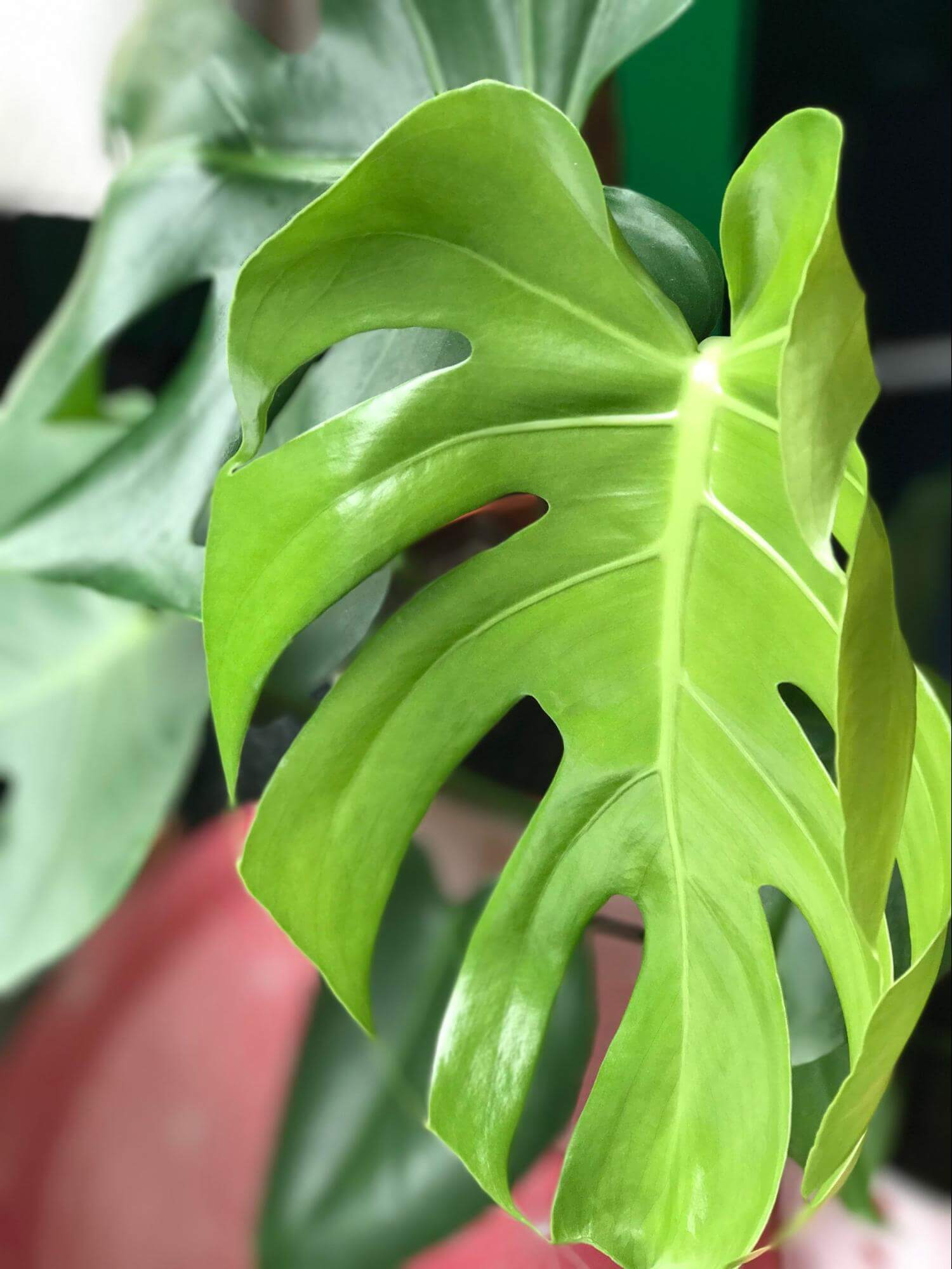
Image Source: Reddit
Your Monstera standleyana plant has a green formation because it needs more light and isn’t getting enough water. Just as monstera petola, when there isn’t enough light to photosynthesize, chlorophyll (green pigment) turns pale. Also, when your plant isn’t watered enough, its dark green coloration turns light green.
Monstera Standleyana Leaves Curling
Your Monstera leaves curling is never a good sign for the plant. It indicates that your plant has too much light; if touched, they become brittle and crumble.
Monstera Standleyana Pests
Your Monstera standleyana, a tropical plant, is susceptible to pests like spider mites, aphids, and mealy bugs, which may damage or kill it if not treated. Treatment with insecticidal soap or Neem oil will help eliminate these pests.
Monstera Standleyana Diseases
Your Monstera standleyana plant can end up with any disease that affects Monsteras. One notable one is root rot, which is caused as a result of overwatering. In addition, heavy and poorly aerated soil might also lead to this condition.
Where to Buy Monstera Standleyana
The first place we recommend you buy your Monstera standleyana is at bunnings. It has the broadest and most unbeatable range of prices. Other marketplaces are Esty.com, eBay.com, etc., with many vendors and choices.
What’s Monstera Standleyana Price
All Monstera standleyana Albo Variegata for sale depend on their sizes. Price ranges from $40 to $150, and some vendors offer higher or lower fees. For Monstera standleyana Aurea variegation which is rarer, its price ranges from $90 to $200.
Monstera Standleyana Care: In Summary
So much has been discussed about this beautiful ornamental climbing plant. Though rare, if you find one and can afford it, please buy and follow our easy step-by-step guide to grow and care for your Monstera standleyana plant.
For more step-by-step ideas, diy tips and guides, kindly visit the website guyabouthome.com providing the best garden & home improvement tips.


